How to Prevent Mold Sticking?
In the past two years, with the development of the die-cast industry, die-cast simulation (commonly known as mold flow analysis) has gradually been widely accepted and applied, and its practical role has become increasingly prominent during use: helping companies optimize designs, improve processes and save costs.
In the die-cast process, mold sticking is a very common defect, which usually manifests itself as the surface of the die casting is not smooth enough and extra metal may even appear. The corresponding mold parts are also not smooth, and molten aluminum adheres to the surface. As the number of mold production cycles increases, mold sticking will become more and more serious.
There are three main reasons for mold sticking:
1. In the die-cast process, the mold and aluminum alloy are adhered or even welded in some areas due to various reasons. The microstructure is combined.
2. During the mold opening and ejection stage, the aluminum alloy was not completely solidified well, resulting in insufficient strength. Part of the molten metal was still attached to the mold surface during the final ejection.
3. Some areas of the mold are strained due to various reasons, which increases the chance of the bonding reaction between the molten metal and the mold, resulting in mold sticking on the surface of the mold.
An in-depth analysis of the three causes of defect can correspond to more causes, including mold surface quality, production temperature, alloy composition and spraying. Among the many causes, the temperature during production can be simulated in advance through the Intelligent Casting Chaoyun platform to predict where defects may occur, including mold temperature and product temperature, optimizing the product structure in a targeted manner, preparing for response strategies for defects in advance and improving production efficiency and yield.
Case analysis
Take a product as an example in the following. Starting from the actual production, we find the causes of product defects through Intelligent Casting Chaoyun simulation, and learn from the defect prediction during the development of other new products to achieve the effect of early prevention.
In the actual production process of the first product, the surface was not smooth in some areas, and as the number of production models increased, the defects tended to become more serious, as shown in the red circle in Figure 1 and the side wall area of the two large round holes in Figure 2.
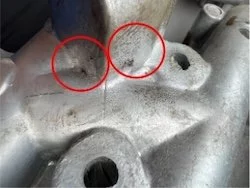
Figure 1 Product sticking to the mold (Product 1)
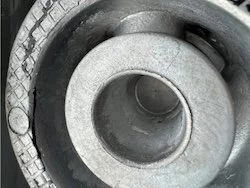
Figure 2 Product 1 sticking to the mold
Through simulation, we can find that there are relatively obvious heat joint risks in these two areas: the red highlighted area shown in Figure 3 is the heat joint risk area corresponding to Figure 1. The left side is the simulation result when it is not transparent, and the right side is the simulation result when the shell is partially transparent.
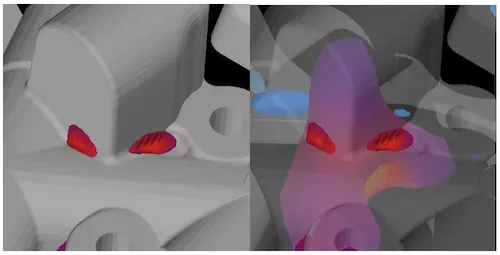
Figure 3 Hot joint risk area 1 (product 1) predicted by Zhizhu Chaoyun simulation
Similarly, Figure 4 shows the hot joint risk area corresponding to Figure 2. The color in Figure 4 is more obvious and wider than that shown in Figure 3 (highlighted area), which is consistent with the condition of the casting after production. The surface defects of the product in Figure 2 are much more serious than those in Figure 1.
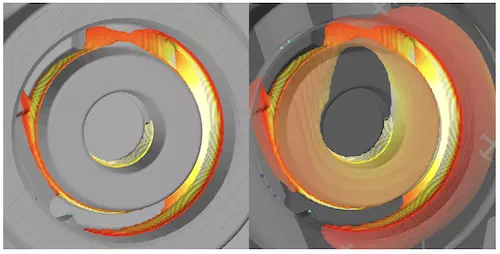
Figure 4 Hot joint risk area 2 (product 1) predicted by Zhizhu Chaoyun simulation
From the simulation results, we can determine that the mold sticking in these two areas of the product is caused by thermal nodes. The heat in the hot zone area is higher, making it easier for the molten metal to react with the mold. The surface of the mold after the reaction becomes no longer smooth. As the number of times the mold is used increases, the surface of the mold will become increasingly rough. Develop corresponding improvement strategies based on the causes of hot joints. The best way is to reduce the wall thickness of the corresponding area of the product, but modifications in this area are often not allowed. Therefore, we can only settle for the next best thing and optimize production from the perspective of the die-cast process and mold design to minimize defects or reduce the probability of defects.
From the perspective of the die-cast process, the initial temperature of the molten metal can be appropriately lowered to slightly reduce the overall temperature of the mold, thereby reducing the heat in the heat-concentrated areas of the mold; or the spraying time in the corresponding area can be appropriately increased to reduce the mold temperature.
From the perspective of mold design, cooling water can be provided as close to the hot joint area as possible to prevent overheating in some areas of the mold. In addition, the hardness of the mold can be adjusted, including selecting more suitable mold materials and heat treatment effects to prevent the occurrence of defects. In this case, since the mold has been manufactured, the conditions and methods to reduce defects and improve product quality from the perspective of mold design are very limited, and the cost of improvement is high.
Experience can be learned from this case: If we can predict the areas where hot joints may occur during production at the early stage of mold design, then we can prepare corresponding countermeasures in advance during mold design to reduce the possibility of mold sticking, or be able to respond promptly when there is mold sticking.
The development of new products
By analogy of the simulation experience of the above products to new product development, another new product was simulated and predicted in the early stage of development, and it was found that the hot joint risk area is great and concentrated, as shown in Figure 5. The left side is the simulation result when it is not transparent, and the right side is the simulation result when the shell is partially transparent. For the risk areas predicted by simulation, point cooling can be provided for the mold design stage on the slider to take away the heat from the heat-concentrated area of the mold as much as possible in the production process. In addition, necessary surface treatment measures such as nitriding can be carried out on the surface of the slider core.
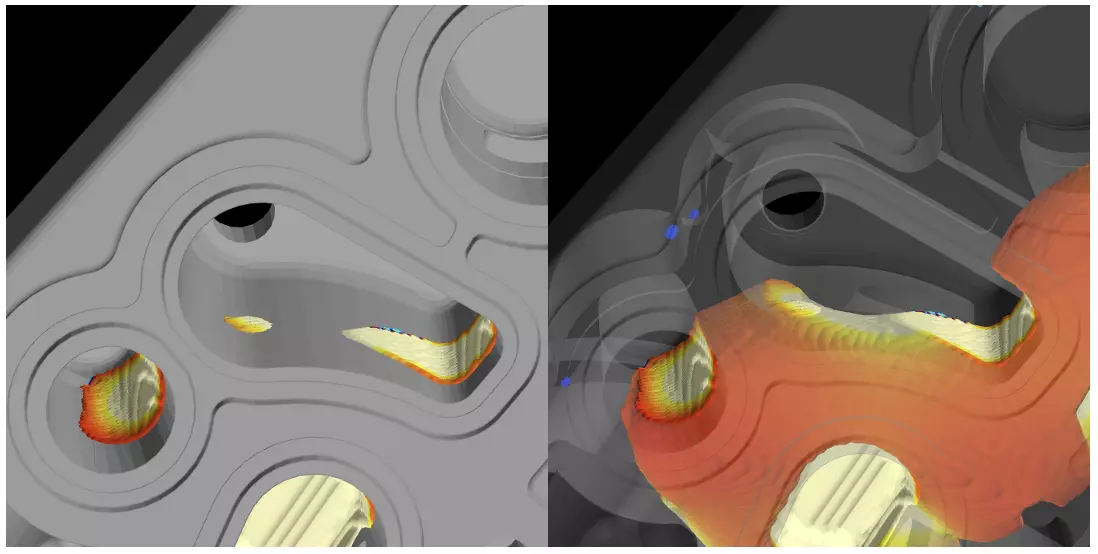
Figure 5 Hot joint risk areas predicted by Zhizhu Chaoyun simulation (Product 2)
Although the mold sticking still occurred in the final production process, as shown in the red circle in Figure 6, the overall defective area was much smaller than expected, and more molds were produced.
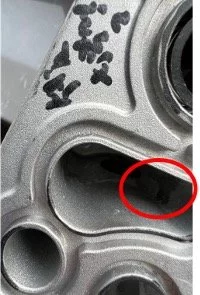
Figure 6 The mold sticking area of the product during actual production (Product 2)
To sum up, in the early stage of mold design, we can use Intelligent Casting Chaoyun simulation software to predict the hot joint risk area in advance, optimize the product to a structure that is more conducive to production by die casting, or reserve the mold design record and corresponding improvement measures. Then the mold’s service life will be improved during mold production and production will be more efficient.
In the die-cast process, mold sticking is a very common defect, which usually manifests itself as the surface of the die casting is not smooth enough and extra metal may even appear. The corresponding mold parts are also not smooth, and molten aluminum adheres to the surface. As the number of mold production cycles increases, mold sticking will become more and more serious.
There are three main reasons for mold sticking:
1. In the die-cast process, the mold and aluminum alloy are adhered or even welded in some areas due to various reasons. The microstructure is combined.
2. During the mold opening and ejection stage, the aluminum alloy was not completely solidified well, resulting in insufficient strength. Part of the molten metal was still attached to the mold surface during the final ejection.
3. Some areas of the mold are strained due to various reasons, which increases the chance of the bonding reaction between the molten metal and the mold, resulting in mold sticking on the surface of the mold.
An in-depth analysis of the three causes of defect can correspond to more causes, including mold surface quality, production temperature, alloy composition and spraying. Among the many causes, the temperature during production can be simulated in advance through the Intelligent Casting Chaoyun platform to predict where defects may occur, including mold temperature and product temperature, optimizing the product structure in a targeted manner, preparing for response strategies for defects in advance and improving production efficiency and yield.
Case analysis
Take a product as an example in the following. Starting from the actual production, we find the causes of product defects through Intelligent Casting Chaoyun simulation, and learn from the defect prediction during the development of other new products to achieve the effect of early prevention.
In the actual production process of the first product, the surface was not smooth in some areas, and as the number of production models increased, the defects tended to become more serious, as shown in the red circle in Figure 1 and the side wall area of the two large round holes in Figure 2.

Figure 1 Product sticking to the mold (Product 1)

Figure 2 Product 1 sticking to the mold
Through simulation, we can find that there are relatively obvious heat joint risks in these two areas: the red highlighted area shown in Figure 3 is the heat joint risk area corresponding to Figure 1. The left side is the simulation result when it is not transparent, and the right side is the simulation result when the shell is partially transparent.

Figure 3 Hot joint risk area 1 (product 1) predicted by Zhizhu Chaoyun simulation
Similarly, Figure 4 shows the hot joint risk area corresponding to Figure 2. The color in Figure 4 is more obvious and wider than that shown in Figure 3 (highlighted area), which is consistent with the condition of the casting after production. The surface defects of the product in Figure 2 are much more serious than those in Figure 1.

Figure 4 Hot joint risk area 2 (product 1) predicted by Zhizhu Chaoyun simulation
From the simulation results, we can determine that the mold sticking in these two areas of the product is caused by thermal nodes. The heat in the hot zone area is higher, making it easier for the molten metal to react with the mold. The surface of the mold after the reaction becomes no longer smooth. As the number of times the mold is used increases, the surface of the mold will become increasingly rough. Develop corresponding improvement strategies based on the causes of hot joints. The best way is to reduce the wall thickness of the corresponding area of the product, but modifications in this area are often not allowed. Therefore, we can only settle for the next best thing and optimize production from the perspective of the die-cast process and mold design to minimize defects or reduce the probability of defects.
From the perspective of the die-cast process, the initial temperature of the molten metal can be appropriately lowered to slightly reduce the overall temperature of the mold, thereby reducing the heat in the heat-concentrated areas of the mold; or the spraying time in the corresponding area can be appropriately increased to reduce the mold temperature.
From the perspective of mold design, cooling water can be provided as close to the hot joint area as possible to prevent overheating in some areas of the mold. In addition, the hardness of the mold can be adjusted, including selecting more suitable mold materials and heat treatment effects to prevent the occurrence of defects. In this case, since the mold has been manufactured, the conditions and methods to reduce defects and improve product quality from the perspective of mold design are very limited, and the cost of improvement is high.
Experience can be learned from this case: If we can predict the areas where hot joints may occur during production at the early stage of mold design, then we can prepare corresponding countermeasures in advance during mold design to reduce the possibility of mold sticking, or be able to respond promptly when there is mold sticking.
The development of new products
By analogy of the simulation experience of the above products to new product development, another new product was simulated and predicted in the early stage of development, and it was found that the hot joint risk area is great and concentrated, as shown in Figure 5. The left side is the simulation result when it is not transparent, and the right side is the simulation result when the shell is partially transparent. For the risk areas predicted by simulation, point cooling can be provided for the mold design stage on the slider to take away the heat from the heat-concentrated area of the mold as much as possible in the production process. In addition, necessary surface treatment measures such as nitriding can be carried out on the surface of the slider core.

Figure 5 Hot joint risk areas predicted by Zhizhu Chaoyun simulation (Product 2)
Although the mold sticking still occurred in the final production process, as shown in the red circle in Figure 6, the overall defective area was much smaller than expected, and more molds were produced.

Figure 6 The mold sticking area of the product during actual production (Product 2)
To sum up, in the early stage of mold design, we can use Intelligent Casting Chaoyun simulation software to predict the hot joint risk area in advance, optimize the product to a structure that is more conducive to production by die casting, or reserve the mold design record and corresponding improvement measures. Then the mold’s service life will be improved during mold production and production will be more efficient.
Related News
- Industrialization of the Composite 3D Printing for General Motors
- Porsche and GM Have Obtained Achievement in 3D Printing Auto Parts Technology
- Development of Aluminum Alloy Die Castings for Automobile Steering Knuckles (Part Two)
- Development of Aluminum Alloy Die Castings for Automobile Steering Knuckles (Part One)
- Die Casting Technologies of Automobile Structural Parts (Part Three)
- The Die Casting Technology of Automobile Structural Parts (Part Two)
- The Die Casting Technology of Automobile Structural Parts (Part One)
- Application of Heat-Free Aluminum Alloys to Integrated Die-Casting
- Mechanical Properties and Microstructure of Heat-Free Alloys
- Designing Die-Cast Molds for Complex Shells


